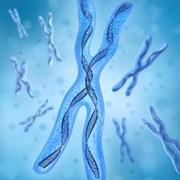Causes
Successful conception involves many steps:
- An egg is released from the woman's ovaries (ovulation).
- The egg travels to the fallopian tubes. Here it can be fertilized by the man's sperm.
- If the egg is fertilized (conception), it moves down the fallopian tubes to the uterus.
- It secures itself into the wall of the uterus. It then begins its 40-weeks of fetal growth.
Most cases of infertility are due to problems with ovulation or problems with fallopian tubes.
Female Reproductive Organs

Problems With Ovulation
If the egg is not released from the follicle in the ovary, you will not be able to conceive. Up to 40% of cases are due to this. Some factors that can cause problems are:
- Hormonal disorders
- Polycystic ovarian syndrome
- Ovulation disorder
- Ovarian cysts
Problems With Fallopian Tubes
If the fallopian tubes are damaged or blocked, it is difficult for the egg to be fertilized or to travel to the uterus. Problems can be caused by:
- Pelvic inflammatory disease
- Endometriosis
- Previous surgeries which have changed pelvic structures or caused scar tissue in the pelvis
- Ectopic pregnancies
- Birth defects
Risk Factors
These factors increase your chance of developing infertility:
- Age: older than 35 years old
- Very high or very low levels of body fat (resulting in lack of ovulation), obesity
- Excessive exercise (causing to severe a loss of body fat)
- Chronic diseases such as:
- Smoking
- Caffeine consumption
- Alcohol intake
-
Occupational exposure to:
- High temperatures
- Toxic substances
- Chemicals
- Pesticides
- Radiation
- Constant stress
-
History of:
- Pelvic inflammatory disease
- Endometriosis
- Polycystic ovaries
- Ectopic pregnancy
- Kidney failure
- Cirrhosis
- Pituitary tumors
- Anorexia nervosa
- Autoimmune hypothyroidism
- Uterine fibroids
- Uterine surgery
- Ulcerative colitis
- Crohn's disease
- Epilepsy
- Cushing's disease
- Sickle cell anemia
- HIV infection
- Kidney disease
-
Medications, including
- Acetaminophen
- Ibuprofen
- Pain medications
- Hormones
- Antibiotics
- Antidepressants
Please be aware that this information is provided to supplement the care provided by your physician. It is neither intended nor implied to be a substitute for professional medical advice. CALL YOUR HEALTHCARE PROVIDER IMMEDIATELY IF YOU THINK YOU MAY HAVE A MEDICAL EMERGENCY. Always seek the advice of your physician or other qualified health provider prior to starting any new treatment or with any questions you may have regarding a medical condition. Copyright © 2024 EBSCO Publishing All rights reserved.
 Do Women Need to Have Menstrual Periods?
Do Women Need to Have Menstrual Periods?







